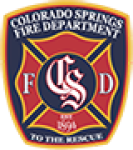The provisions below are required for this specific occupancy. These are in addition to the general requirements for all buildings. The general requirements may be found here.
GROUP I-1 OCCUPANCIES
Fire Safety and Evacuation Plan: The required fire safety and evacuation plan shall include special employee actions, including fire protection procedures necessary for residents, and shall be amended or revised upon admission of any resident with unusual needs.
Fire Evacuation Plan: The required fire evacuation plan shall include a description of special staff actions. In addition plans in Group I-1 Condition 2 (residents require limited verbal or physical assistance while responding to an emergency situation to complete building evacuation) occupancies shall include procedures for evacuation through a refuge area in an adjacent smoke compartment and then to an exterior assembly point.
Fire Safety Plans: A copy of the fire safety plan shall be maintained at the facility at all times. Plans shall include the following in addition to the general requirements:
- Location and number of resident sleeping rooms.
- Location of special locking or egress control arrangements.
Employee Training: Employees shall be periodically instructed and kept informed of their duties and responsibilities under the plan. Employees are to be specifically trained on the emergency procedures for any special needs occupants. A copy of the plan shall be readily available at all times within the facility.
Resident Training: Residents capable of assisting in their own evacuation shall be trained in the proper actions to take in the event of a fire. In Group I-1 Condition 2 (residents require limited verbal or physical assistance while responding to an emergency situation to complete building evacuation) occupancies, training shall include evacuation through an adjacent smoke compartment and then to an exterior assembly point. The training shall include actions to take if the primary escape route is blocked. Where the resident is given rehabilitation or habilitation training, methods of fire prevention and actions to take in the event of a fire shall be a part of the rehabilitation training program. Residents shall be trained to assist each other in case of fire to the extent their physical and mental abilities permit them to do so without additional personal risk.
Drill Frequency: In addition to the required evacuation drills, employees shall participate in drills an additional two times a year on each shift. Twelve drills with all occupants shall be conducted in the first year of operation. Drills are not required to be held at unexpected times and under varying conditions.
Resident Participation in Drills: Emergency evacuation drills shall involve the actual evacuation of residents to a selected assembly point and shall provide residents with experience in exiting through all required exits. All required exits shall be used during emergency evacuation drills.
GROUP I-2 OCCUPANCIES
Fire Evacuation Plans: The required fire safety and evacuation plans shall include a description of special staff actions. Plans shall include all of the following in addition to the general requirements:
- Procedures for evacuation for patients with needs for containment or restraint and post-evacuation containment, where present.
- A written plan for maintenance of the means of egress.
- Procedure for a defend-in-place strategy.
- Procedures for a full-floor or building evacuation, where necessary.
Fire Safety Plans: A copy of the plan shall be maintained at the facility at all times. Plans shall include all of the following in addition to the general requirements:
- Location and number of patient sleeping rooms and operating rooms.
- Location of adjacent smoke compartments or refuge areas.
- Path of travel to adjacent smoke compartments.
- Location of special locking, delayed egress or access control arrangements.
- Location of elevators utilized for patient movement in accordance with the fire safety plan, where provided.
Emergency Evacuation Drills: General emergency evacuation drill provisions are required with the following exceptions:
- The movement of patients to safe areas or to the exterior of the building is not required.
- Where emergency evacuation drills are conducted after visiting hours or where patients or residents are expected to be asleep, a coded announcement shall be an acceptable alternative to audible alarms.
GROUP I-3 OCCUPANCIES
Employee Training: Employees shall be instructed in the proper use of portable fire extinguishers and other manual fire suppression equipment. Training of new employees shall be provided promptly upon entrance to duty. Refresher training shall be provided not less than annually.
Employee Staffing: Group I-3 occupancies shall be provided with 24-hour staffing. An employee shall be within three floors or 300 feet horizontal distance of the access door of each resident housing area. In Group I-3 Conditions 3, 4 and 5, as defined by the adopted fire code, the arrangement shall be such that the employee involved can start release of locks necessary for emergency evacuation or rescue and initiate other necessary emergency actions within 2 minutes of an alarm. Exception: An employee shall not be required to be within three floors or 300 feet horizontal distance of the access door of each resident housing area in areas in which all locks are unlocked remotely and automatically in accordance with Section 408.4 of the International Building Code.
Notification: Provisions shall be made for residents in Group I-3 Conditions 3, 4 and 5, as defined by the adopted fire code, to readily notify an employee of an emergency.
Keys: Keys necessary for unlocking doors installed in a means of egress shall be individually identifiable by both touch and sight.

